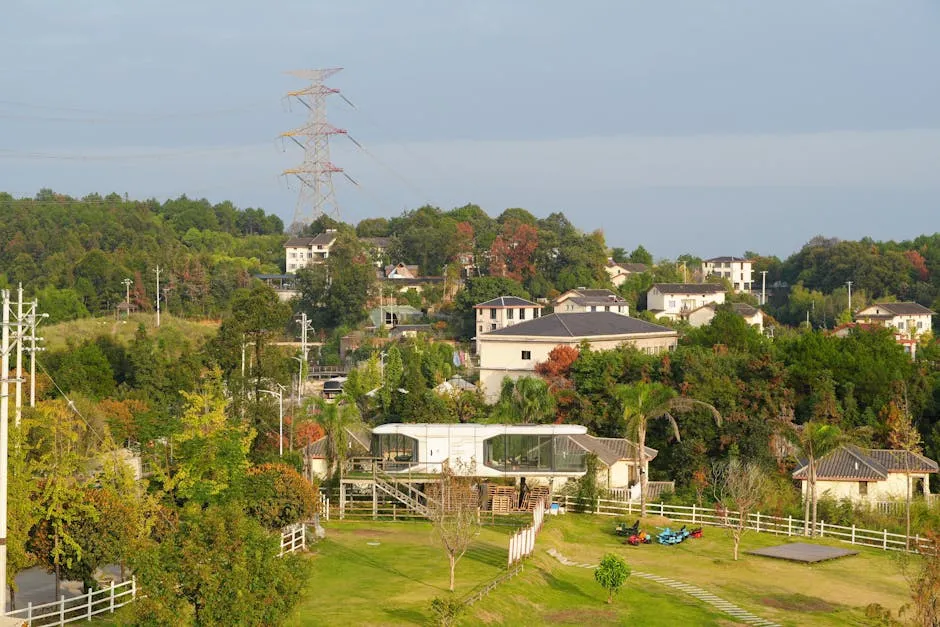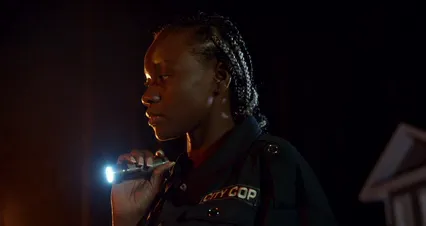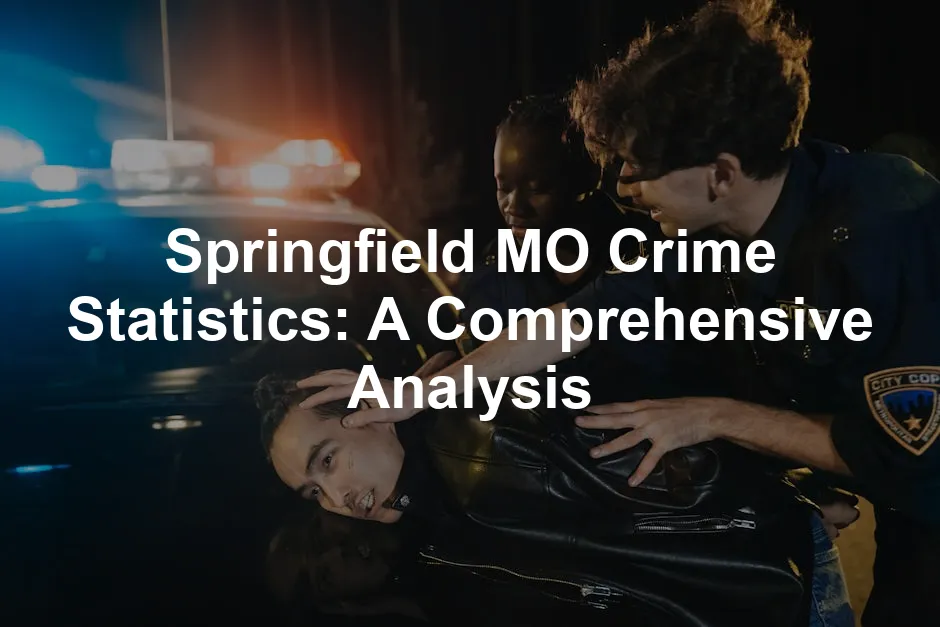Introduction
Understanding crime statistics is vital for residents and potential movers in Springfield, MO. Knowing the safety landscape helps individuals make informed decisions about living in or relocating to the area. For some, the thought of moving to a new place can bring anxiety, especially regarding safety. Knowledge is power, and in this case, it can make all the difference!
Springfield has gained a reputation for having one of the highest crime rates in America. The total crime rate stands at 63 per 1,000 residents. To put this into perspective, the national average is significantly lower, making it crucial to analyze these statistics in detail. If you’re considering moving or already living in Springfield, knowing how these numbers compare nationally can help you grasp the local environment better.
This article will take a comprehensive look at Springfield’s crime statistics. We will explore the overall crime numbers, including violent and property crimes. Comparisons with other cities will also be made to provide context. Additionally, we’ll examine neighborhood safety and gather community perspectives. By the end, you’ll be well-versed in what Springfield’s crime statistics truly mean for its residents.

Understanding Springfield’s Crime Statistics
Overview of Crime in Springfield
Springfield, with a population of around 170,067, has a total crime rate that raises eyebrows. The significant number of 10,775 crimes reported in recent years includes both violent and property offenses. The breakdown reveals that violent crimes account for 2,409 incidents, while property crimes are a staggering 8,366. This gives a violent crime rate of approximately 14.17 crimes per 1,000 residents, and property crime sits at a heavier 49.19 per 1,000 residents.
Such statistics are more than just numbers—they reflect the daily realities faced by Springfield residents. With a 1 in 71 chance of becoming a victim of violent crime and a 1 in 20 chance of experiencing property crime, these figures highlight the pressing need for community awareness and safety measures.
If you’re concerned about your personal safety, consider investing in a Personal Safety Alarm Keychain. This small device can emit a loud sound to deter potential threats and alert others in case of an emergency.
Crime Rate Comparison
When we compare Springfield’s crime rates to both state and national averages, the results are eye-opening. The violent crime rate in Springfield is notably higher than the national median of 4 per 1,000 residents, showcasing a significant concern. Similarly, property crime in Springfield exceeds the national average of 20 per 1,000 residents.
Over the past few years, crime statistics in Springfield have shown fluctuations. For instance, while violent crime has seen a slight increase historically, property crime has shown some decline. Understanding these trends is essential for residents and prospective movers to gauge the safety and security of their environment.
In summary, Springfield’s crime statistics paint a complex picture. While the total crime rate is alarming, it’s important to analyze these figures in context. Engaging with the local community and understanding specific neighborhoods can provide valuable insights into personal safety and perceptions of security in Springfield, MO. For deeper insights into crime trends, consider reviewing the campus sexual assault statistics which highlight the importance of understanding crime data.

Understanding crime statistics, including campus sexual assault statistics, is essential for contextualizing safety in Springfield. campus sexual assault statistics
Violent Crime Analysis
Breakdown of Violent Crimes
Springfield, MO, faces significant violent crime challenges. The statistics reveal a concerning picture. In recent years, the city reported 2,409 violent crimes. This number breaks down into several categories:
- Murder: 17 incidents, translating to 0.10 per 1,000 residents.
- Rape: 190 occurrences, or 1.12 per 1,000 residents.
- Robbery: 309 reported cases, which is about 1.82 per 1,000 residents.
- Assault: A staggering 1,893 incidents, resulting in an alarming rate of 11.13 per 1,000 residents.
With a violent crime rate of about 14.17 per 1,000 residents, the chance of becoming a victim stands at 1 in 71. While it’s easy to dismiss these numbers as mere statistics, they represent real people affected by crime.
Historical data indicates slight fluctuations in Springfield’s violent crime trends. In recent years, the violent crime rate has experienced some ups and downs. For instance, while the overall rate showed a slight increase, assaults have remained particularly high. This trend suggests that while some crimes may fluctuate, violence remains a persistent issue in the community.

Neighborhoods with High Violent Crime Rates
Certain neighborhoods in Springfield bear the brunt of violent crime. Among them are areas like North Springfield and parts of the Westside. These neighborhoods have consistently reported higher crime rates.
What contributes to these elevated crime levels? Several factors play a role. Economic challenges, limited access to resources, and social disorganization often contribute to a cycle of violence. Areas with high poverty rates often see higher crime rates, as residents may resort to desperate measures.
Furthermore, the visibility of certain crimes can perpetuate fear within a community. Residents in these neighborhoods may feel unsafe, which can deter potential investments and improvements. Tackling the root causes of violence in these areas is crucial for fostering a safer environment.
For those wanting to enhance their home security, consider a reliable Home Security Camera System. These systems can help you monitor your property and provide peace of mind.

Property Crime Analysis
Breakdown of Property Crimes
Property crime is another pressing issue in Springfield. The city recorded an astonishing 8,366 property crimes. These incidents break down into various categories:
- Burglary: 1,371 incidents, about 8.06 per 1,000 residents.
- Theft: The most significant category, with 5,840 reported cases, or 34.34 per 1,000 residents.
- Motor Vehicle Theft: 1,155 thefts, translating to 6.79 per 1,000 residents.
With a property crime rate of 49.19 per 1,000 residents, the likelihood of becoming a victim is about 1 in 20. In a city where property crime is prevalent, the fear of loss looms large over residents.
When we analyze trends in property crime over recent years, a notable observation emerges. While property crime rates have seen fluctuations, there has been a general decline recently. This is a positive sign, indicating potential improvements in community safety and law enforcement efforts.

Neighborhoods with High Property Crime Rates
Just as with violent crime, certain neighborhoods experience higher property crime rates. Areas such as North Springfield and parts of downtown often report a significant number of property crimes.
So, what gives? Economic factors play a significant role here, too. Neighborhoods with limited job opportunities often see higher rates of property crimes. When residents struggle to make ends meet, the temptation to commit theft or burglary increases.
Moreover, the transient nature of some neighborhoods can contribute to higher crime rates. Areas with frequent turnover may lack community cohesion, making it difficult to establish strong neighborhood watch initiatives or community ties.
In conclusion, understanding Springfield’s crime statistics is essential for residents and potential movers. By identifying high-crime neighborhoods and the underlying factors contributing to these challenges, residents can better navigate the local landscape. It’s clear that Springfield has work to do in addressing both violent and property crime, but awareness is the first step toward change.

Neighborhood Safety and Community Perspectives
Safety Perceptions Among Residents
Surveys reveal that residents in Springfield have mixed feelings about safety. According to recent polls, 54% of residents feel pretty safe, citing some concerns but generally feeling secure. However, 32% express they are somewhat safe, acknowledging noticeable safety issues. Alarmingly, 6% of respondents report feeling not safe at all, highlighting serious worries about crime levels.
When it comes to local law enforcement, community feedback varies. Approximately 46% of respondents believe the police are very visible and responsive. Yet, 31% feel that while police presence is noticeable, their response time could be better. A small portion of residents, about 8%, think police are not around much but are quick to respond when needed. This feedback suggests an uneven perception of law enforcement effectiveness, which can impact community trust and safety.

Neighborhoods with Lowest Crime Rates
Not all neighborhoods in Springfield are created equal when it comes to safety. Several areas stand out for their low crime rates. Neighborhoods like Brookline, Bois D Arc, and Brookline Southeast consistently report fewer incidents. Residents in these areas enjoy a sense of security and community.
What makes these neighborhoods safer? Strong community initiatives play a significant role. Neighborhood watch programs foster vigilance and cooperation among residents. In addition, active engagement in community events helps build trust and connections, making it harder for crime to take root.
Moreover, economic stability contributes to safety in these areas. Lower poverty rates often correlate with reduced crime levels. Residents benefit from access to resources, employment, and supportive community programs, which can deter criminal activities. Safe neighborhoods foster a positive atmosphere, encouraging families to thrive and communities to flourish.

For those looking for a practical way to enhance home safety, consider investing in a Door Lock with Keypad. This modern solution not only enhances security but also adds convenience to your daily life.
In conclusion, understanding residents’ perceptions of safety and identifying neighborhoods with lower crime rates can empower individuals to make informed choices about where to live in Springfield. With community engagement and resources, it’s possible to foster an environment where everyone feels secure, transforming Springfield into a safer place for all.

Year-Over-Year Crime Trends
Springfield, MO, has been in the spotlight for its crime statistics. Year-over-year analysis reveals interesting trends in both violent and property crime rates. In recent years, the city’s total crime rate has shown fluctuations. According to the latest data, the total crime rate stands at 63 per 1,000 residents, which is alarmingly higher than the national average.
When we break down the numbers, violent crime in Springfield has seen some ups and downs. For instance, there were 2,409 reported violent crimes in the most recent year, translating to a rate of 14.17 per 1,000 residents. This rate is significantly above the national median of 4 per 1,000. However, in a sign of hope, reports indicate that violent crime decreased by 9.2% compared to the previous year. This decline suggests a positive direction, although the numbers still reflect a concerning reality.
On the flip side, property crimes have historically dominated the statistics in Springfield. A whopping 8,366 property crimes were reported, which results in a staggering rate of 49.19 per 1,000 residents. Despite the high prevalence, property crime has also shown signs of improvement, decreasing by 23.8% from the previous year. This decrease is encouraging and indicates that community and law enforcement efforts may be yielding positive results.

If you’re looking to prepare for emergencies, having an Emergency Preparedness Kit can provide peace of mind. These kits often include essential supplies to help you stay safe during unexpected situations.
Delving deeper into specific crime categories can reveal trends. For example, while assaults have remained a consistent issue, burglaries have shown a notable decline. This change could be attributed to heightened community awareness and increased neighborhood watch initiatives.
Overall, the crime trends in Springfield show a mixed bag. While violent crime rates remain high, the recent decreases in both violent and property crime offer a glimmer of hope. Continuous efforts from local law enforcement and community initiatives can further drive these numbers down, making Springfield a safer place for all its residents.

Factors Influencing Crime in Springfield
Socioeconomic Factors
Economic conditions play a crucial role in shaping crime rates in Springfield. Employment opportunities significantly influence community safety and stability. Currently, Springfield boasts an unemployment rate of 3.1%, lower than the national average of 4.7%. This relative economic stability can help mitigate crime rates. When people have jobs, they’re less likely to resort to criminal activities to make ends meet.
Housing affordability is another pressing issue. The median home price in Springfield is around $122,200, which is below the national average of $184,700. This affordability can attract families and individuals looking for stable living conditions. However, it can also lead to a higher population density in certain areas, sometimes resulting in increased competition for resources and, unfortunately, higher crime rates.
Understanding the socioeconomic landscape of Springfield is vital. Areas with higher poverty rates often exhibit elevated crime levels. When resources are scarce, individuals may feel compelled to engage in criminal activities. Thus, improving job opportunities and housing conditions can have a direct impact on reducing crime rates in the city.

Law Enforcement and Community Initiatives
The effectiveness of law enforcement in Springfield is a significant factor in influencing crime rates. Currently, there are about 397 police officers serving a population of approximately 170,067. This translates to a ratio of roughly 2.5 officers per 1,000 residents, lower than both state and national averages. This lower ratio may affect the police’s ability to respond swiftly to incidents, impacting community safety.
In response, Springfield has implemented various community programs aimed at enhancing safety and reducing crime. Initiatives such as neighborhood watch groups and community policing encourage residents to engage actively with law enforcement. These programs foster a sense of camaraderie and shared responsibility for maintaining safety.

Moreover, community outreach efforts play a vital role in building trust between residents and law enforcement. When communities feel supported and connected to their police force, they are more likely to report crimes and cooperate in safety initiatives. As a result, crime rates can further decrease.
By addressing both law enforcement ratios and community engagement, Springfield can continue to make strides in combating crime and enhancing the overall safety of its neighborhoods.

Conclusion
Springfield, MO, has quite the reputation when it comes to crime rates. Our analysis reveals that the city ranks alarmingly high in several categories, with a total crime rate of 63 per 1,000 residents. This figure is significantly above the national average, making it essential for residents and potential movers to take these statistics seriously. The breakdown shows 2,409 violent crimes and a staggering 8,366 property crimes reported recently. With odds of 1 in 71 for violent crime and 1 in 20 for property crime, you can’t help but wonder how safe you really are walking down the street.
Understanding these numbers isn’t just about statistics; it’s about real lives affected by crime. Families, neighbors, and friends are all part of this community, and the implications of these statistics hit home. It’s crucial to stay informed about your safety and the safety of those around you.

For those contemplating a move to Springfield, these crime statistics should certainly be part of your decision-making process. Evaluate the neighborhoods, compare safety measures, and engage with local resources to understand the dynamics at play. Awareness can make all the difference.
Residents and newcomers alike should seek further resources to stay in the know about crime trends. Local community crime maps, law enforcement websites, and neighborhood watch programs are invaluable tools for understanding and enhancing personal safety. Websites like NeighborhoodScout and the Springfield region’s official resources offer insights that help residents stay informed.
Ultimately, knowledge is your best defense. With the right information, you can navigate Springfield’s safety landscape and make well-informed choices about living and thriving in this city. In a world where data can feel overwhelming, let’s turn those statistics into action, fostering a community that values safety and support for all its members.
FAQs
What is the overall crime rate in Springfield, MO?
Springfield’s total crime rate stands at 63 per 1,000 residents, with 10,775 crimes reported recently, including 2,409 violent crimes and 8,366 property crimes.
How does Springfield’s crime rate compare to the national average?
Springfield’s violent crime rate is significantly higher than the national median of 4 per 1,000 residents, while the property crime rate exceeds the national average of 20 per 1,000.
What neighborhoods in Springfield are considered safe?
Safe neighborhoods include Brookline, Bois D Arc, and Brookline Southeast. These areas consistently report lower crime rates and foster strong community initiatives.
What are the most common types of crime in Springfield?
The most prevalent violent crimes include assault, followed by robbery, rape, and murder. Property crimes are dominated by theft, burglary, and motor vehicle theft.
How can residents stay informed about crime in their area?
Residents can utilize community crime maps, local law enforcement websites, and neighborhood watch programs to stay updated on crime trends and safety initiatives in their vicinity.
Please let us know what you think about our content by leaving a comment down below!
Thank you for reading till here 🙂
All images from Pexels




